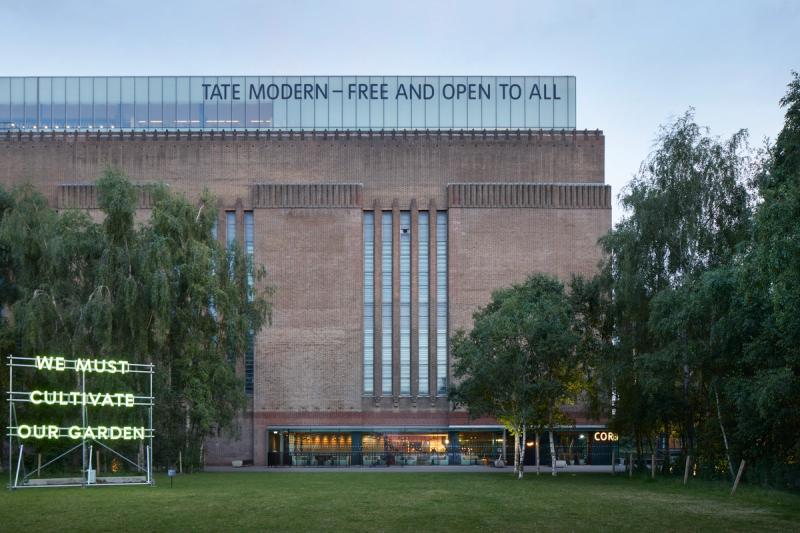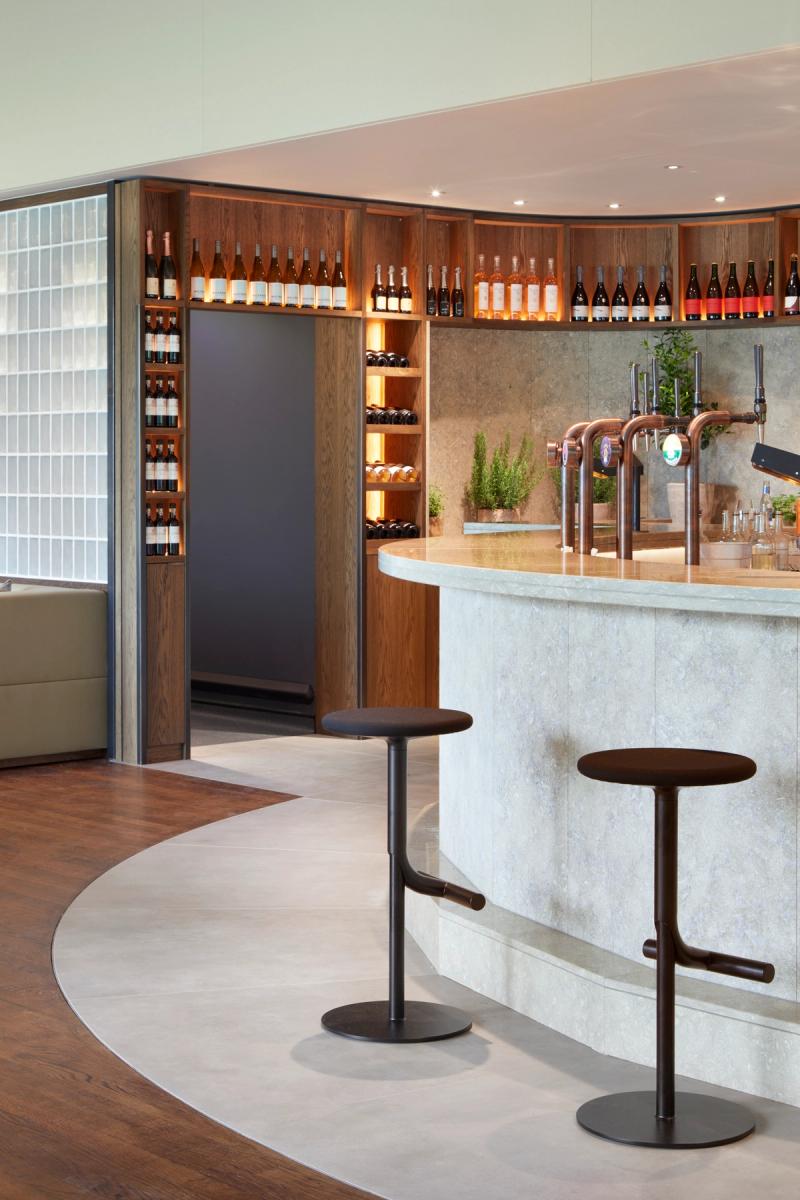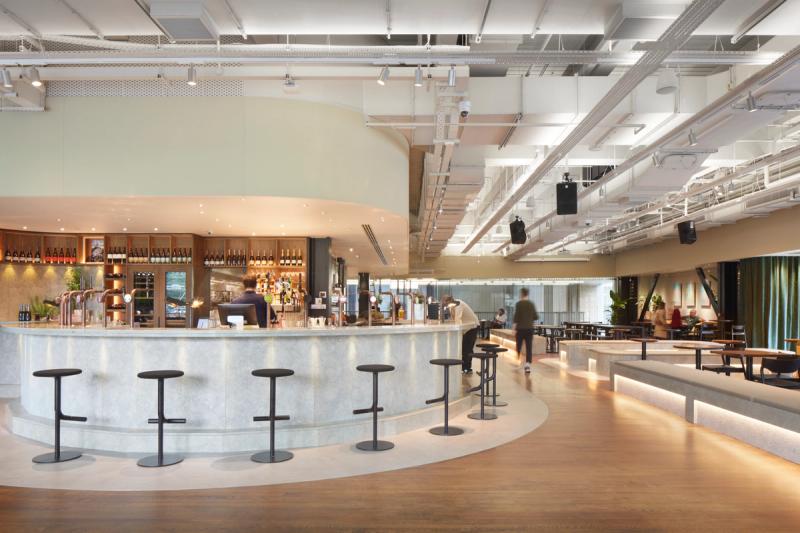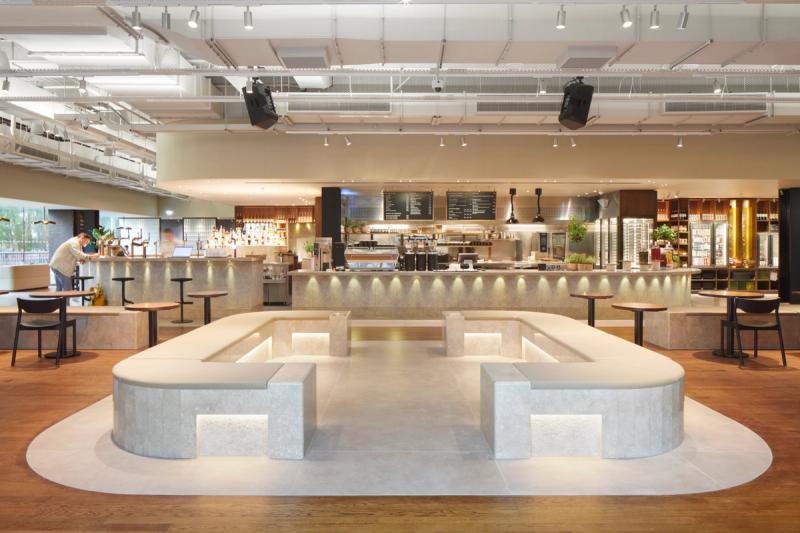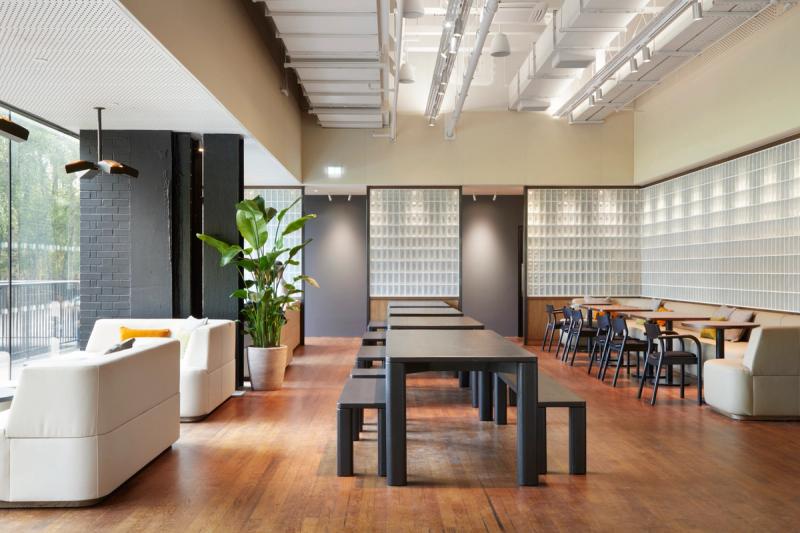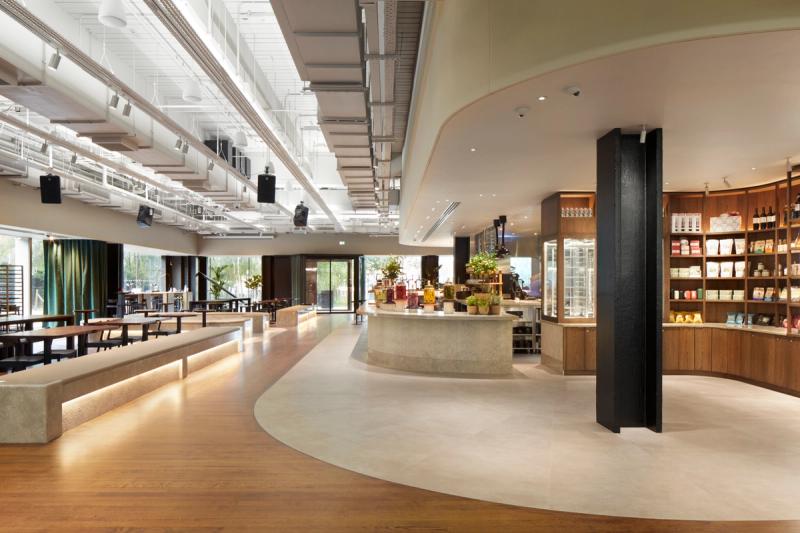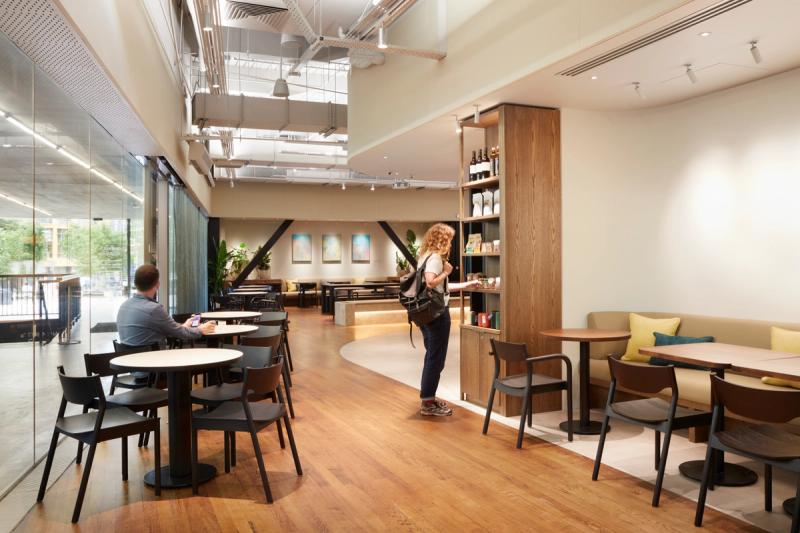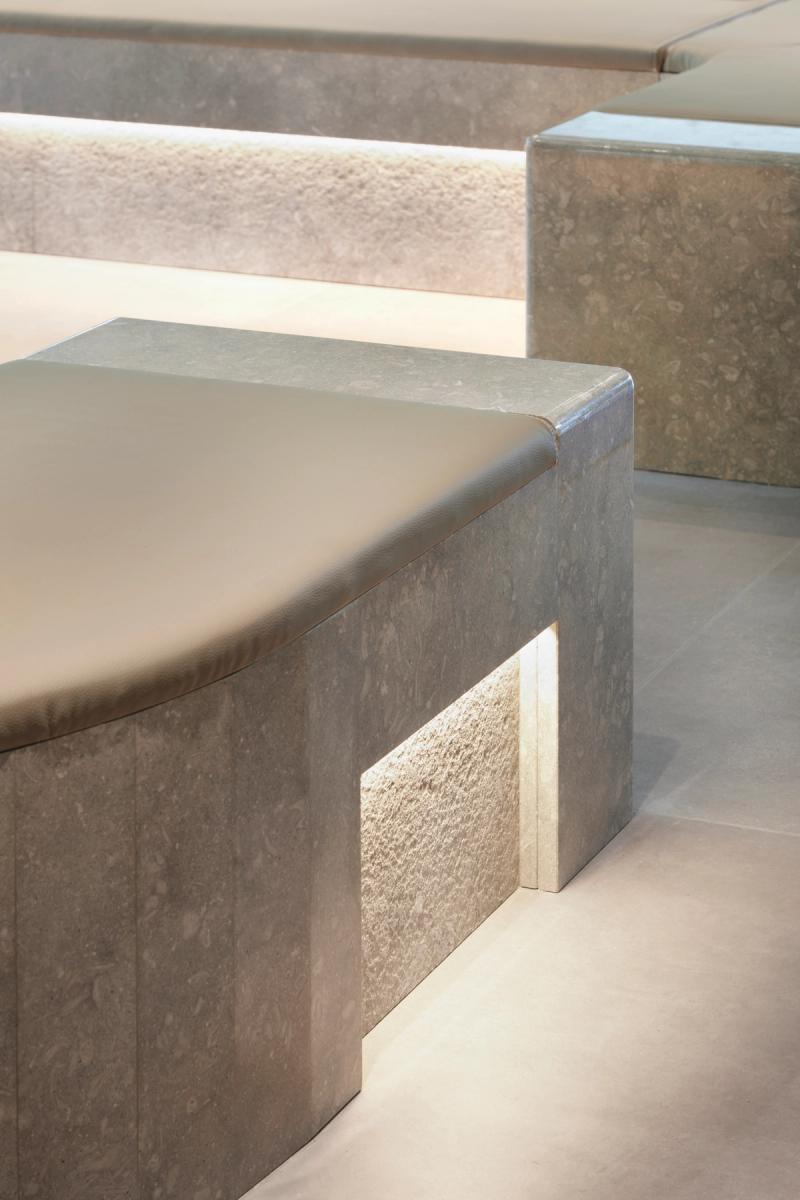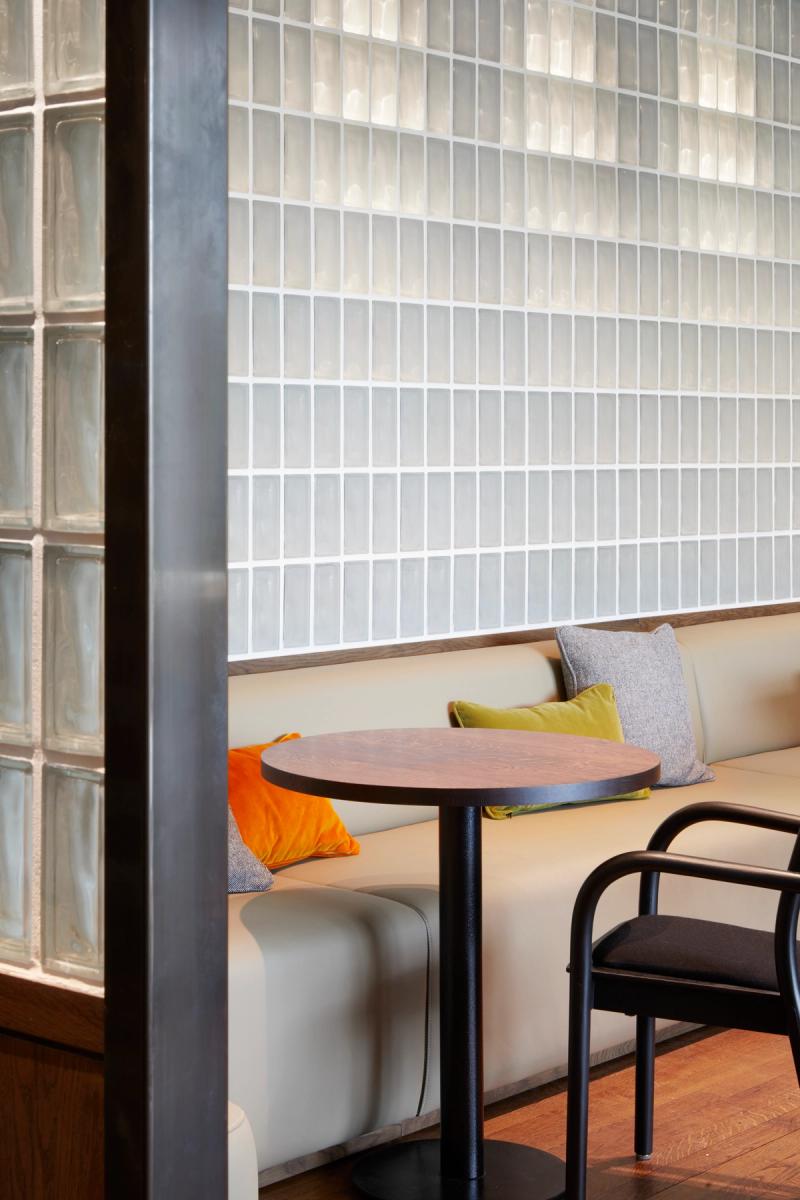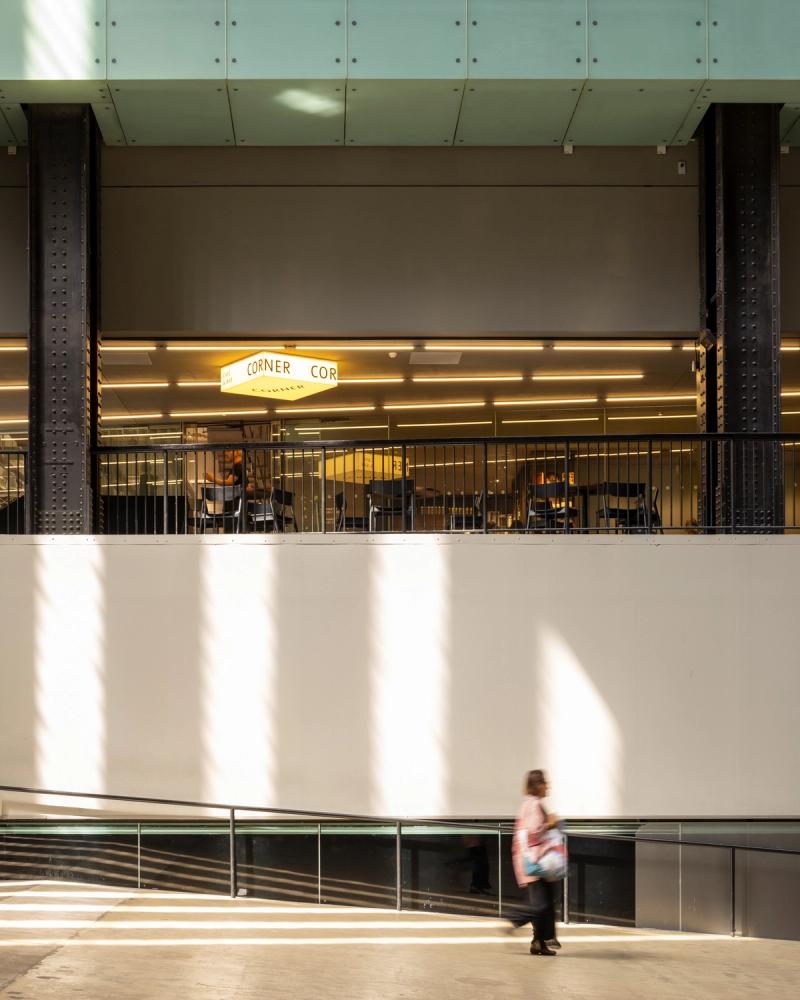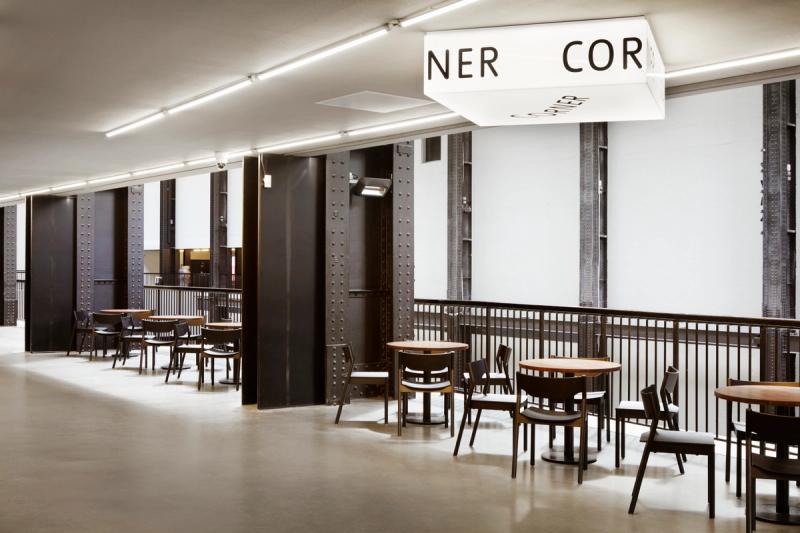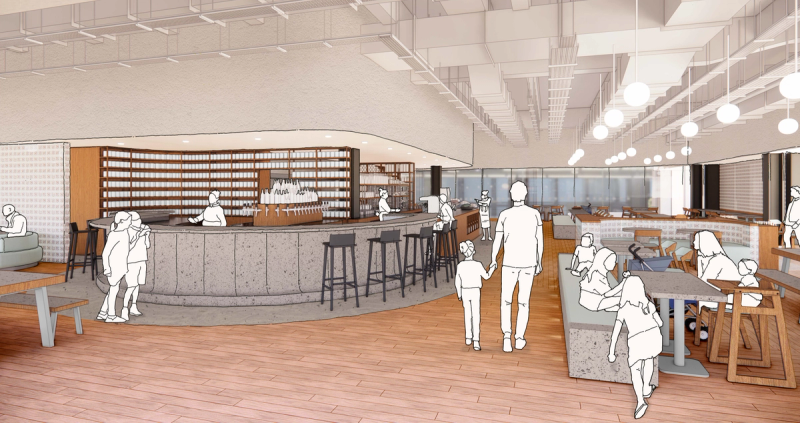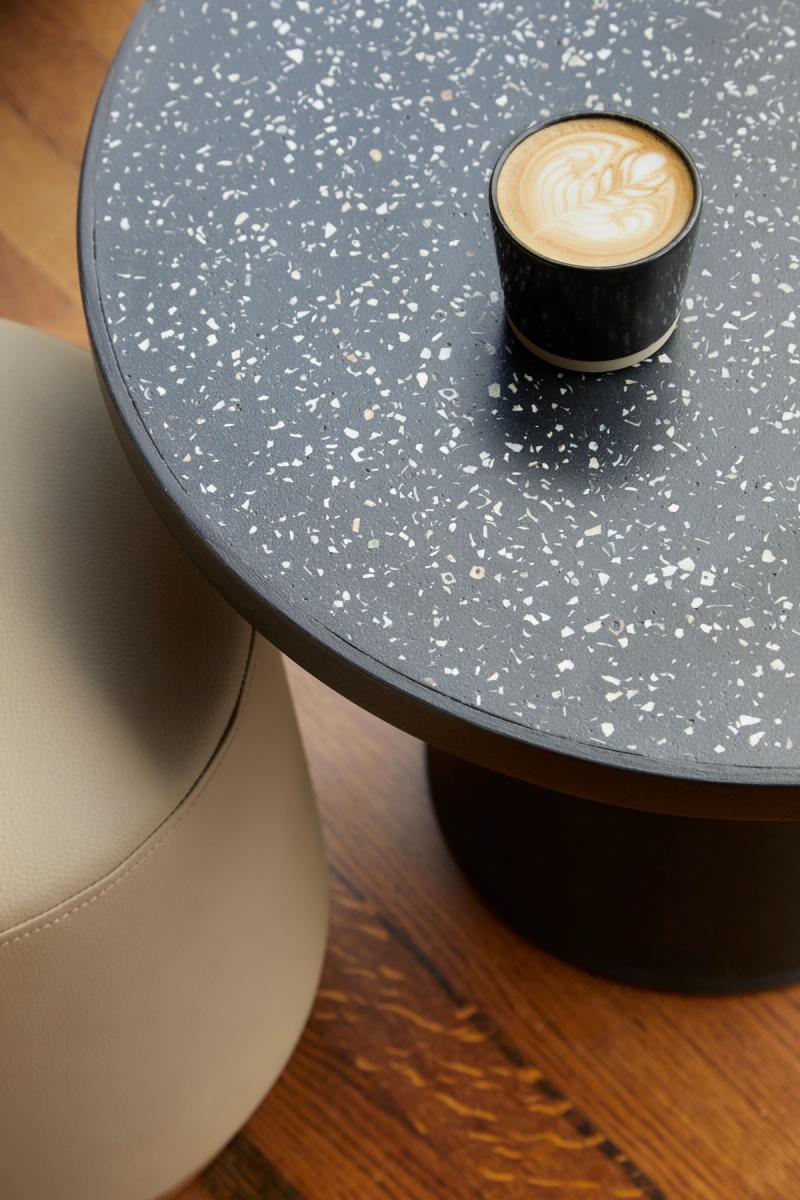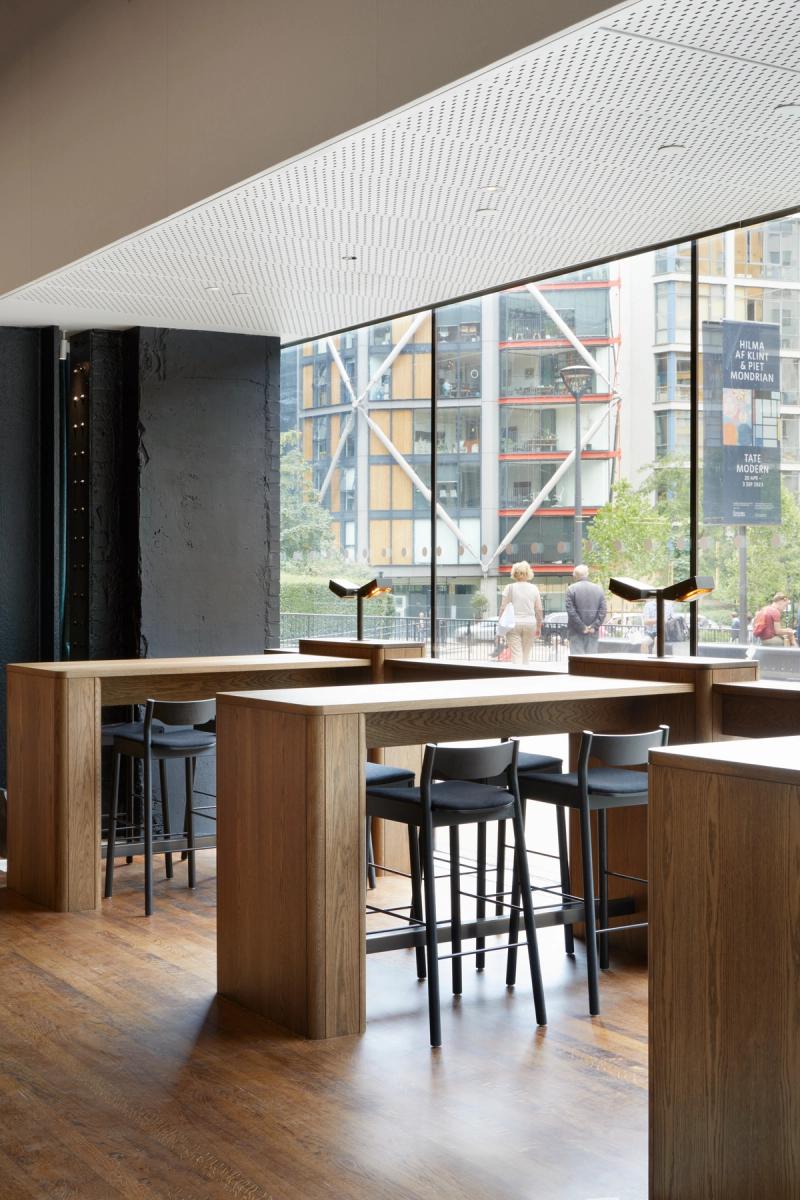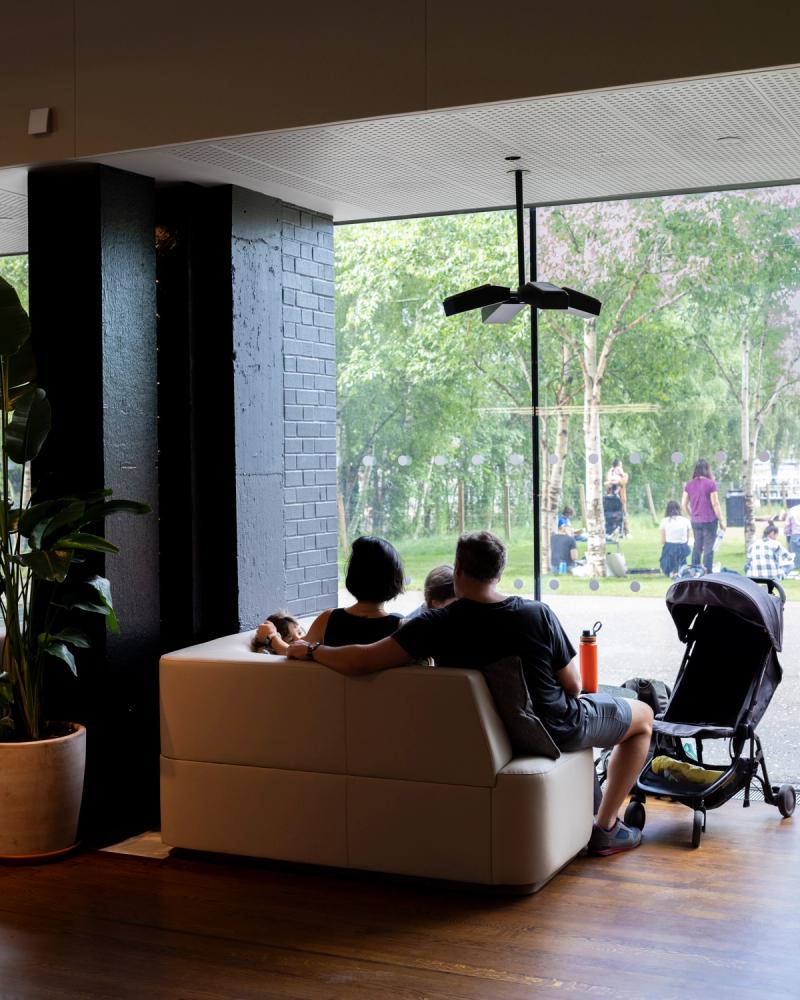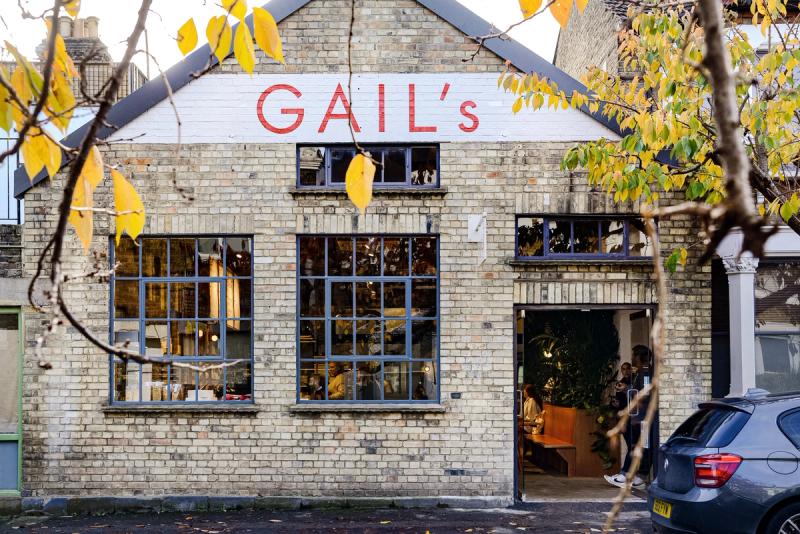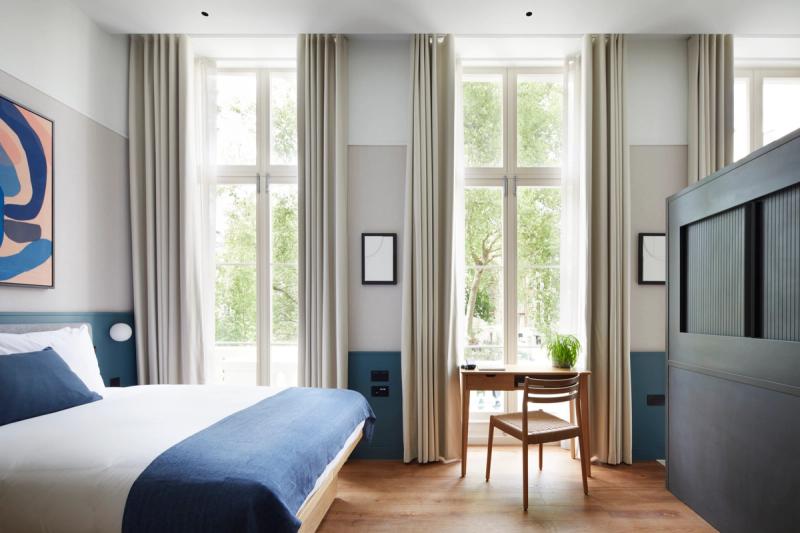Conceived as an extension of the public realm, Holland Harvey and Tate Modern have linked two of London’s most iconic spaces, the Southbank and the Turbine Hall, via a new entrance onto the gallery's lawns.
Working with Tate Eats, the revitalised café and bar is designed to celebrate accessibility and inclusivity—the organisation's core themes—to create an informal, playful setting that is welcoming for all from morning until night.
At its core, this is a place for food and congregation. The scheme encompasses a bar, food servery, retail and coffee counter as the café's focus. These functions are accommodated within one continuous counter expressed in bold geometric forms that echo the monumental structures of the original power station.
The animation and excitement of a busy, open kitchen offer Tate Eats an opportunity to showcase its product and celebrate the provenance of its food.
